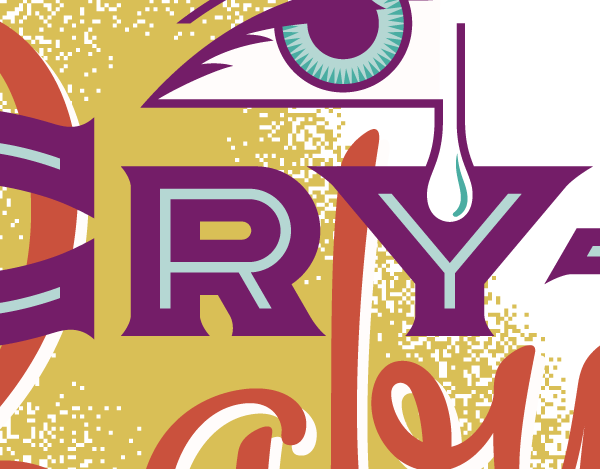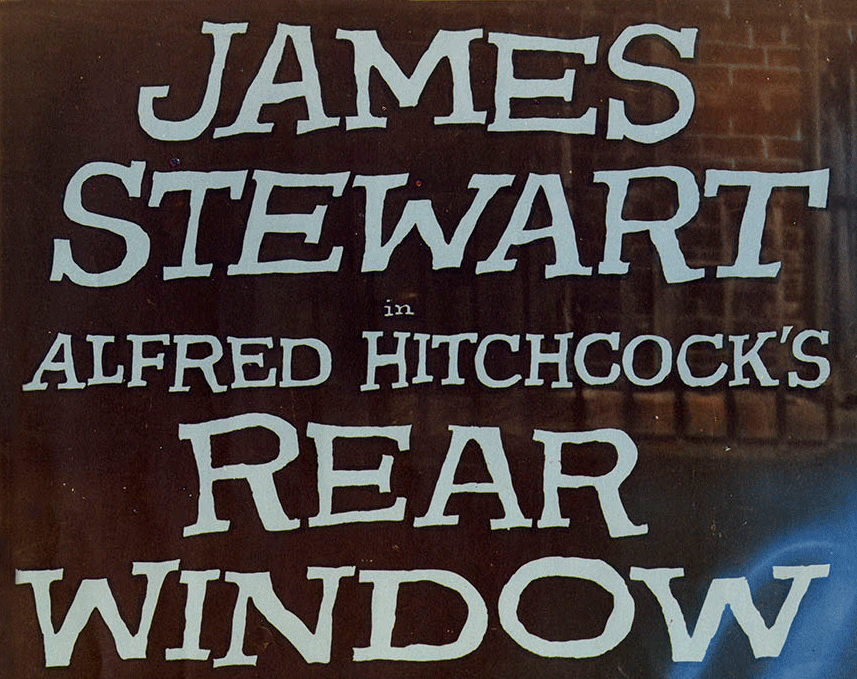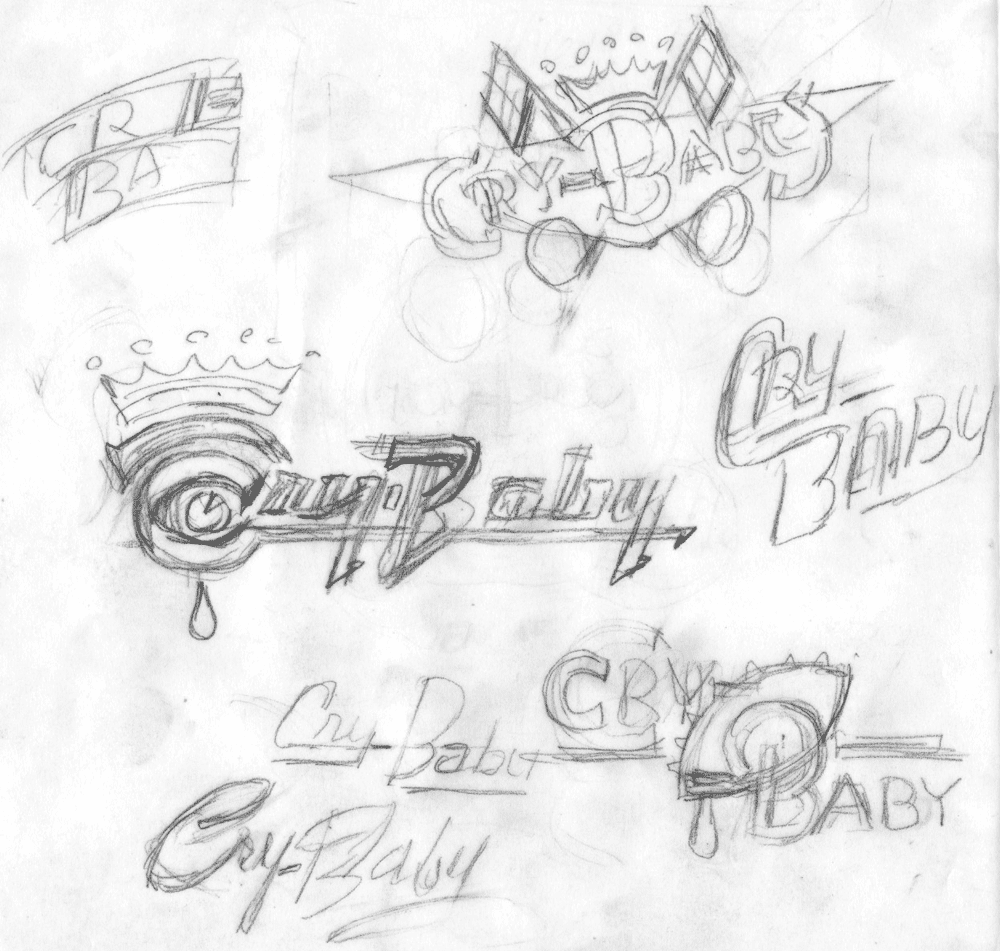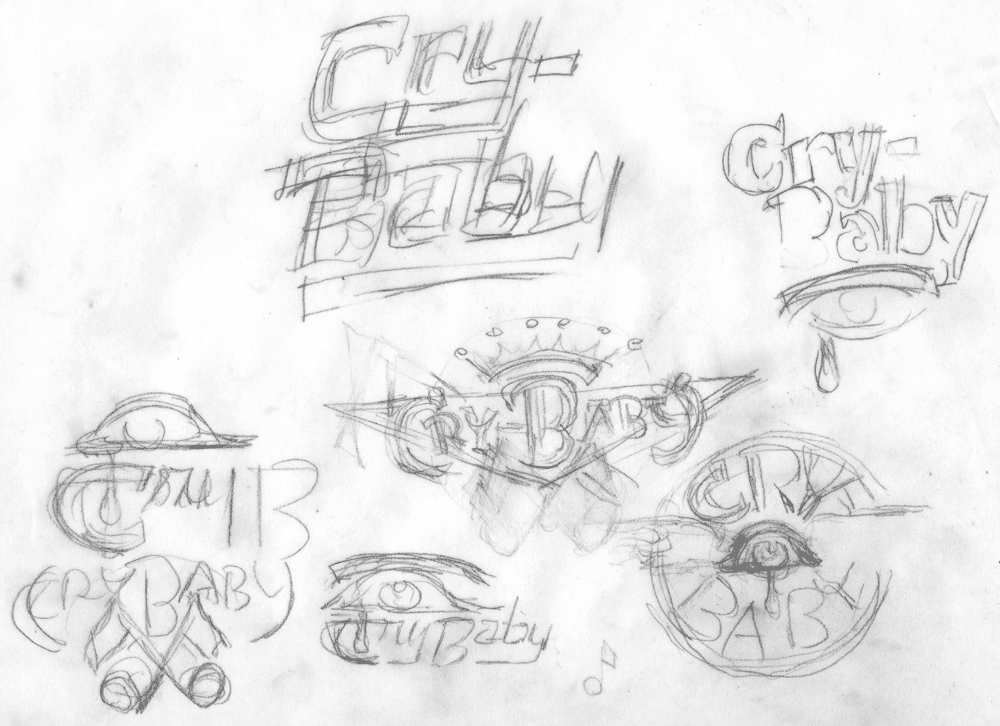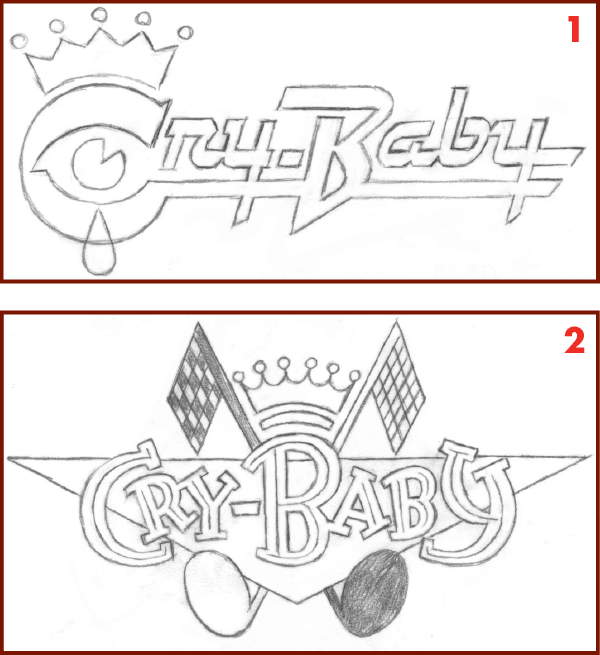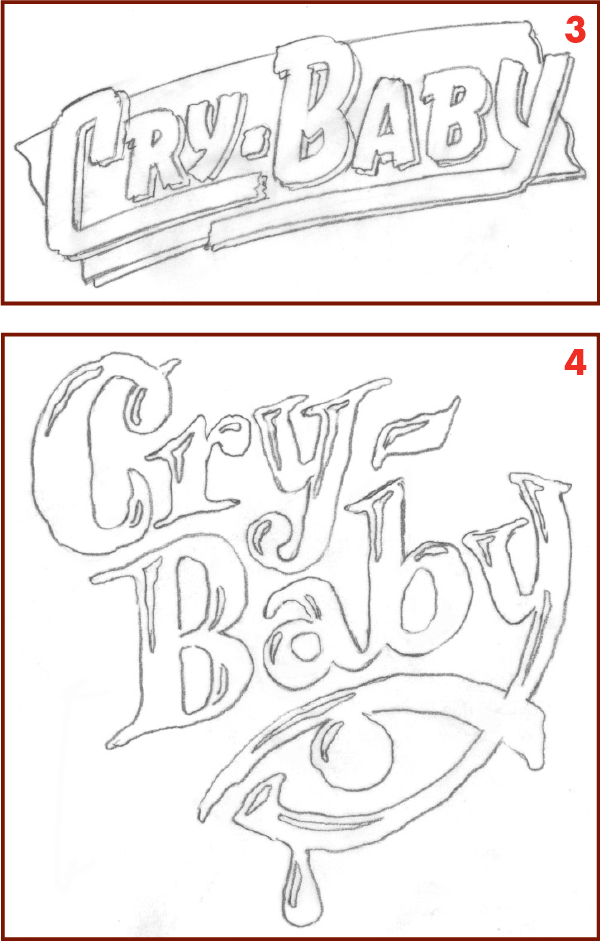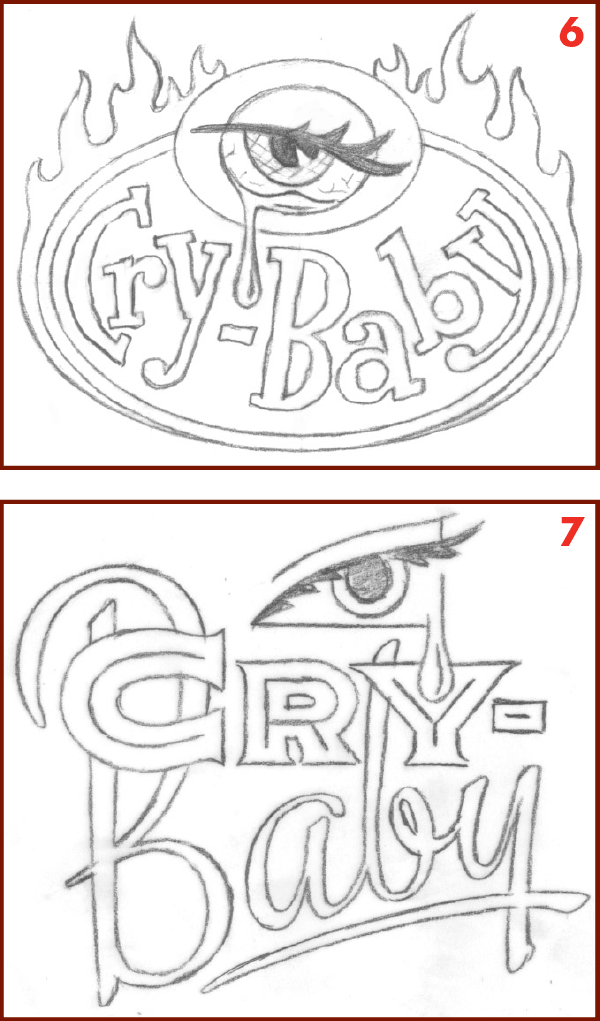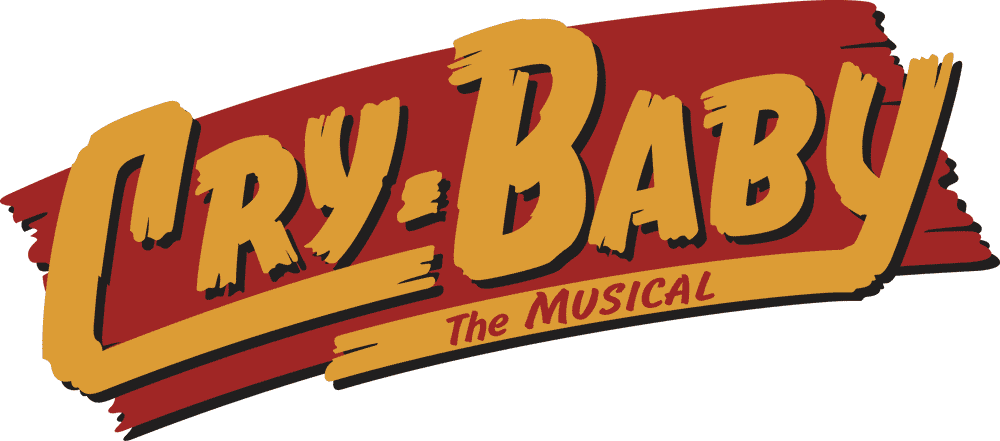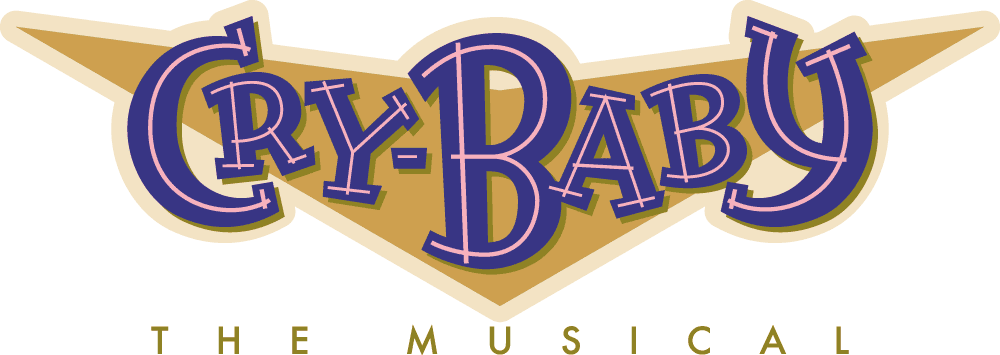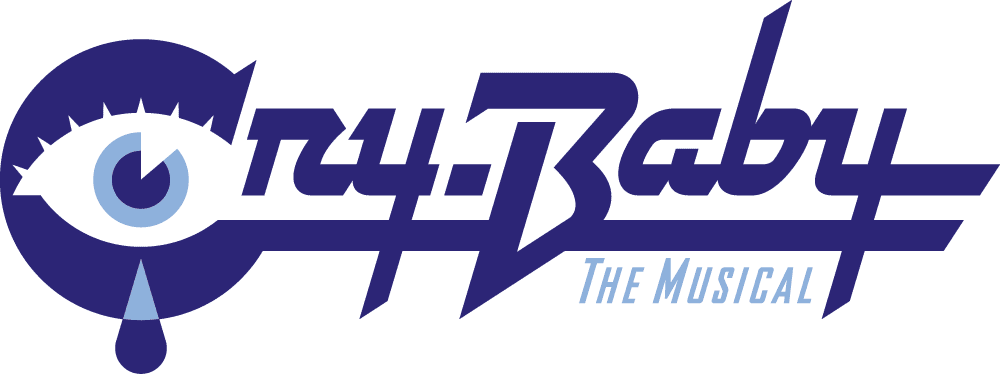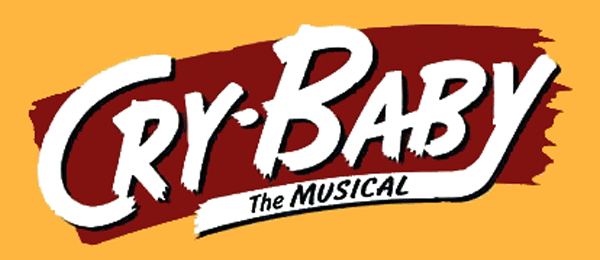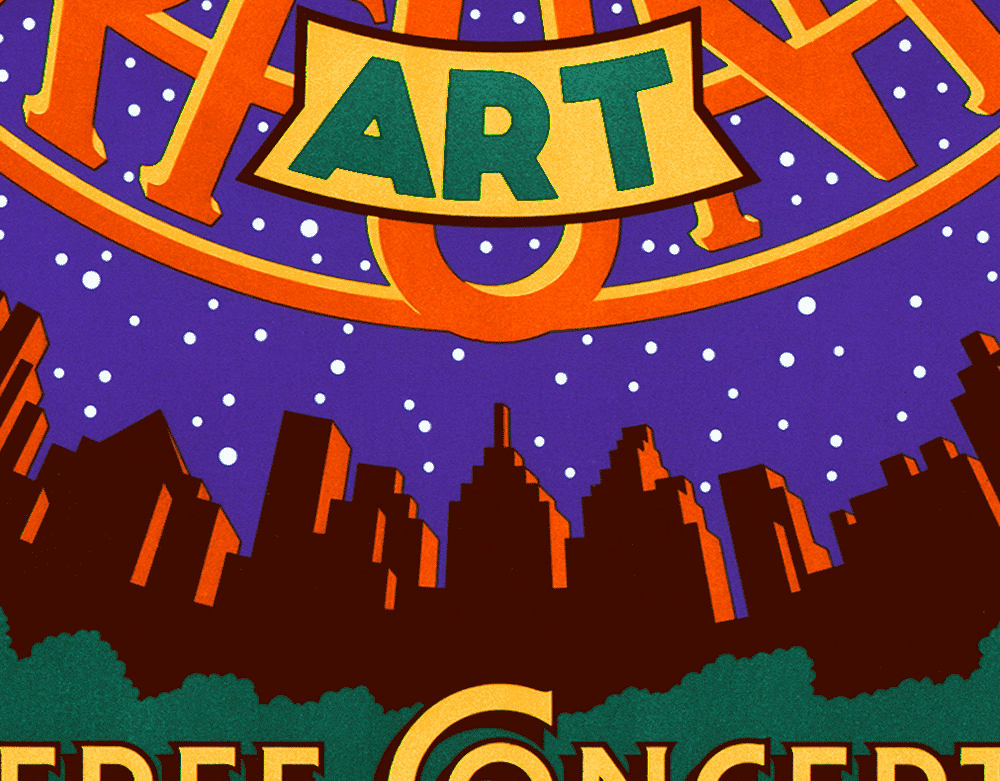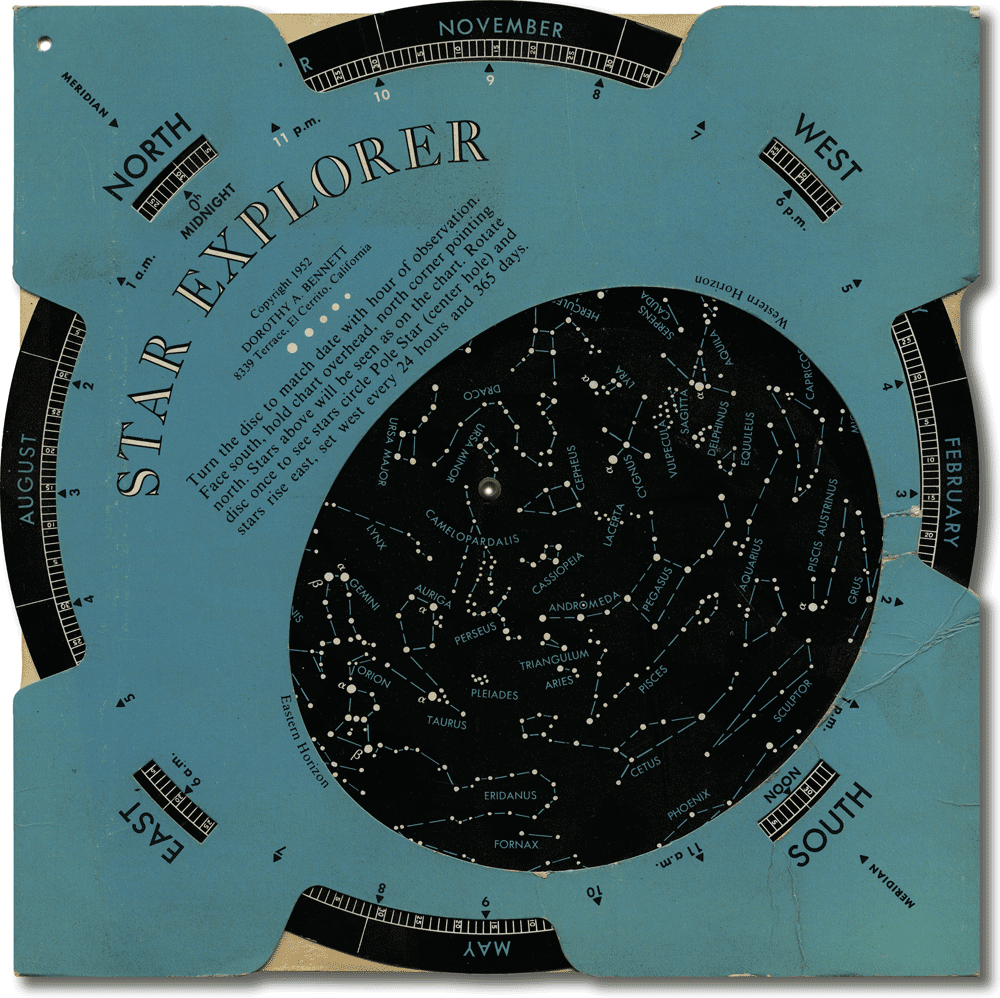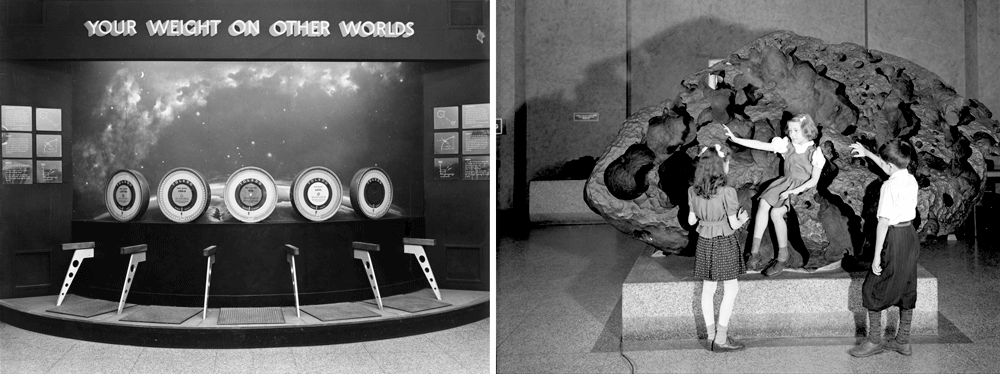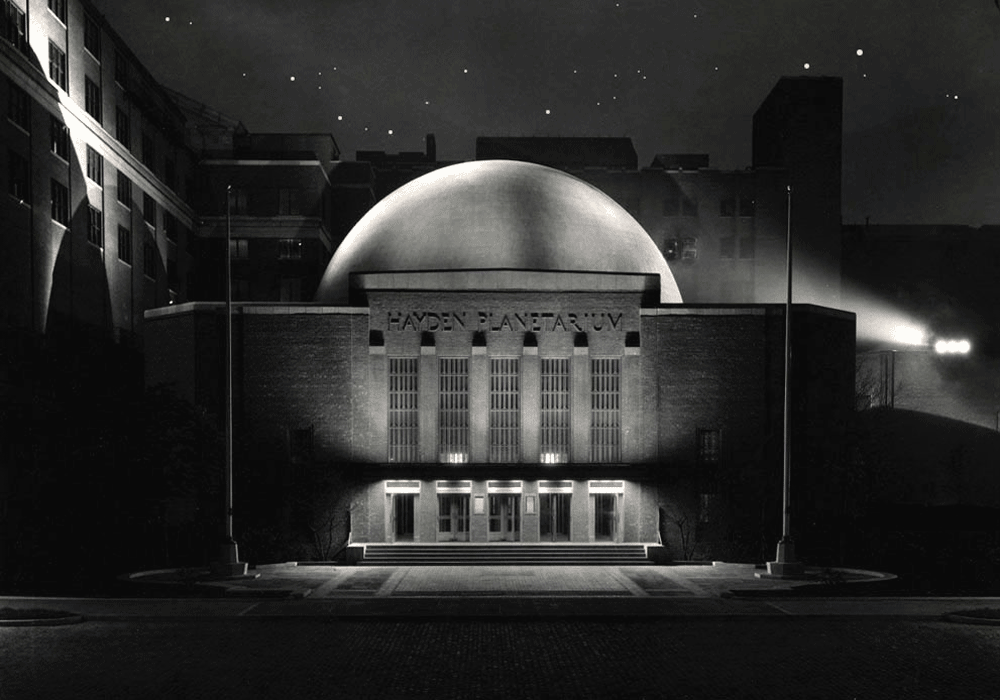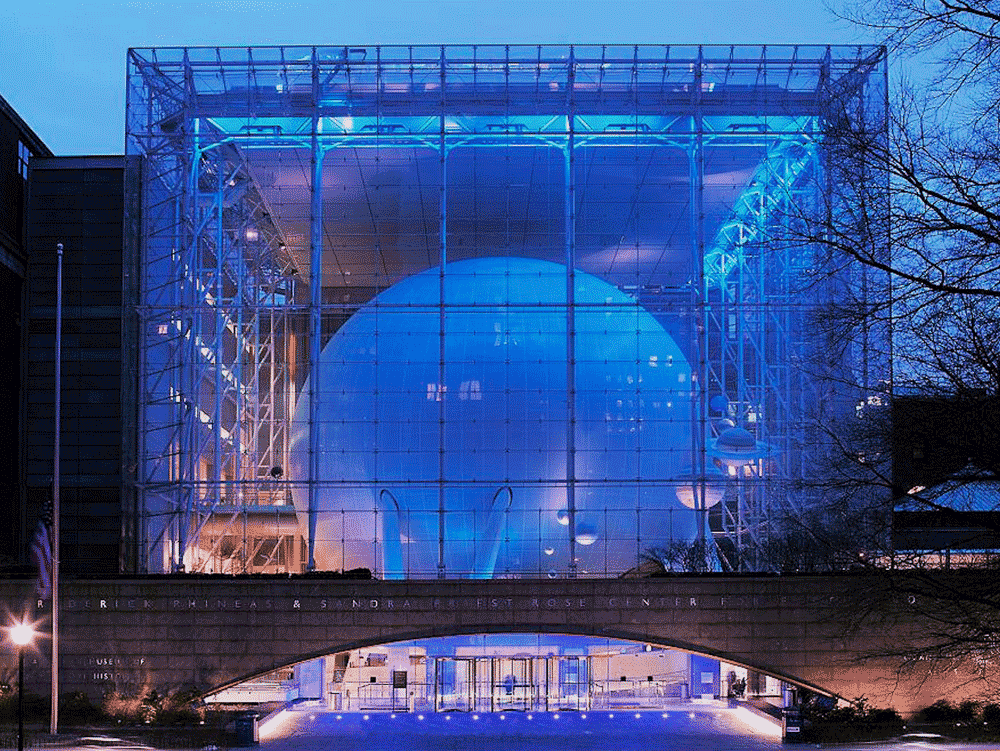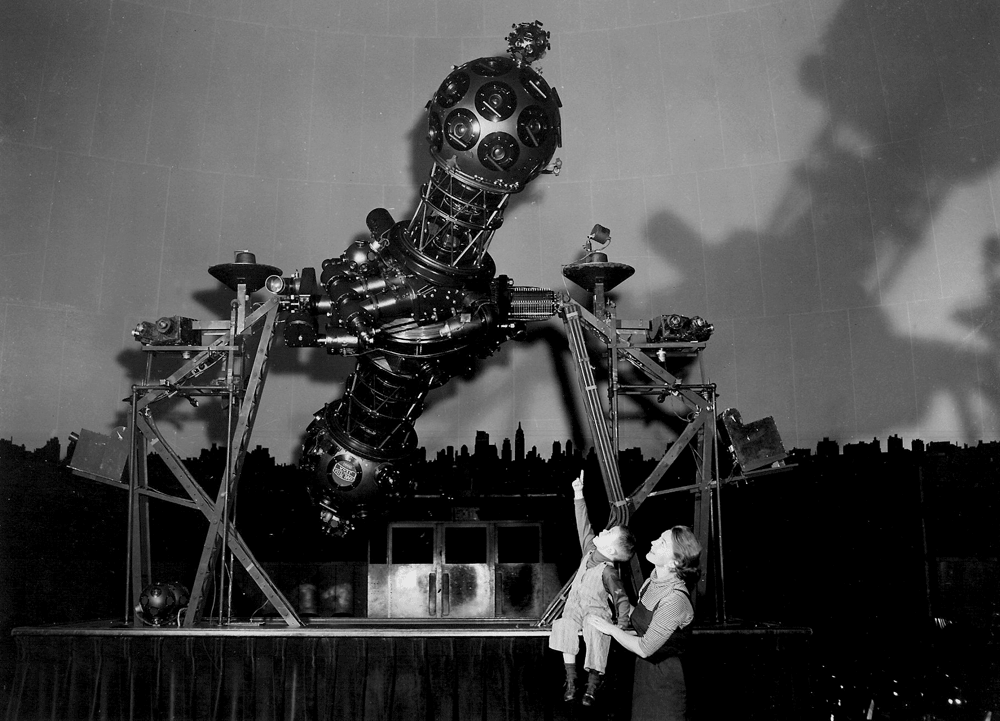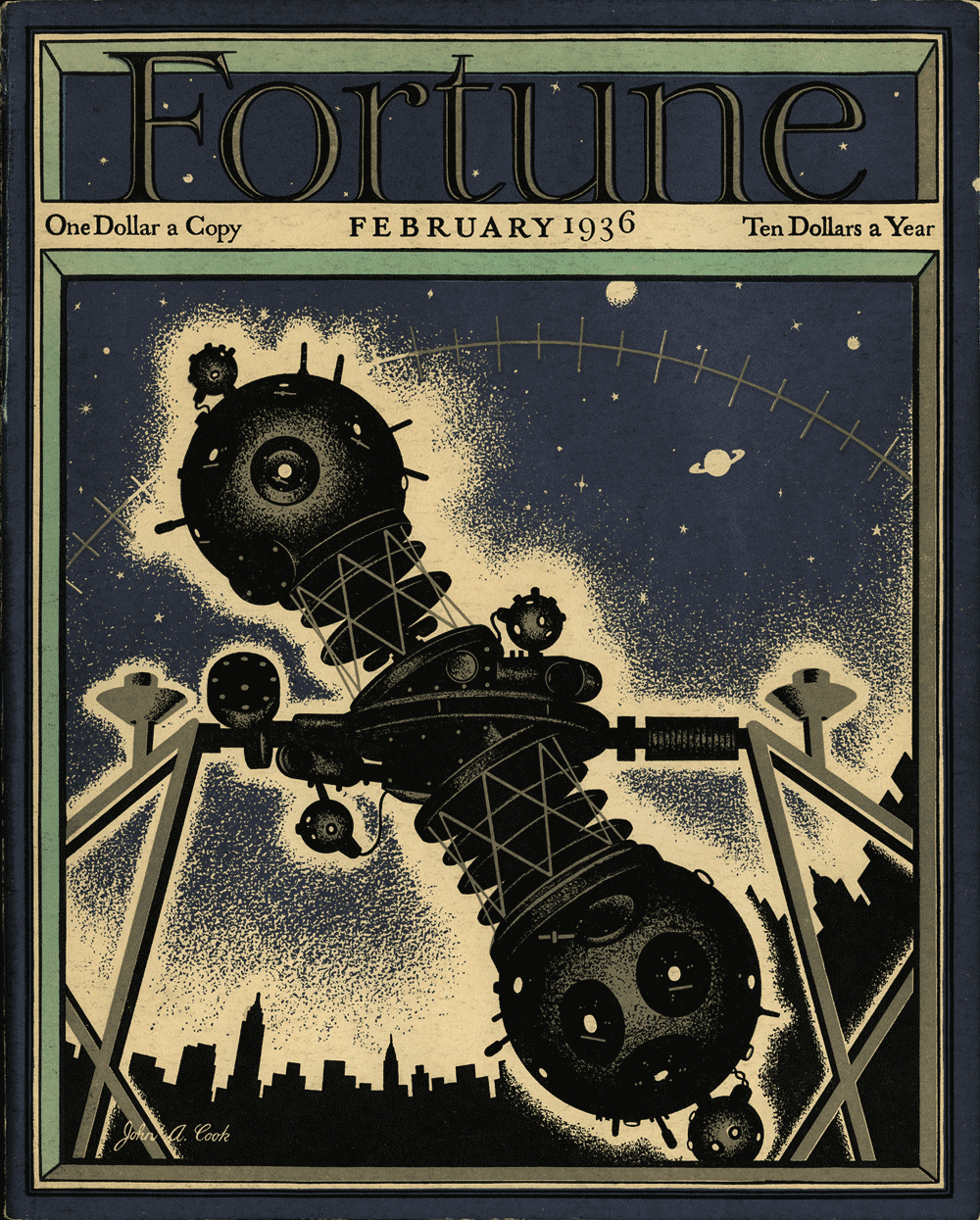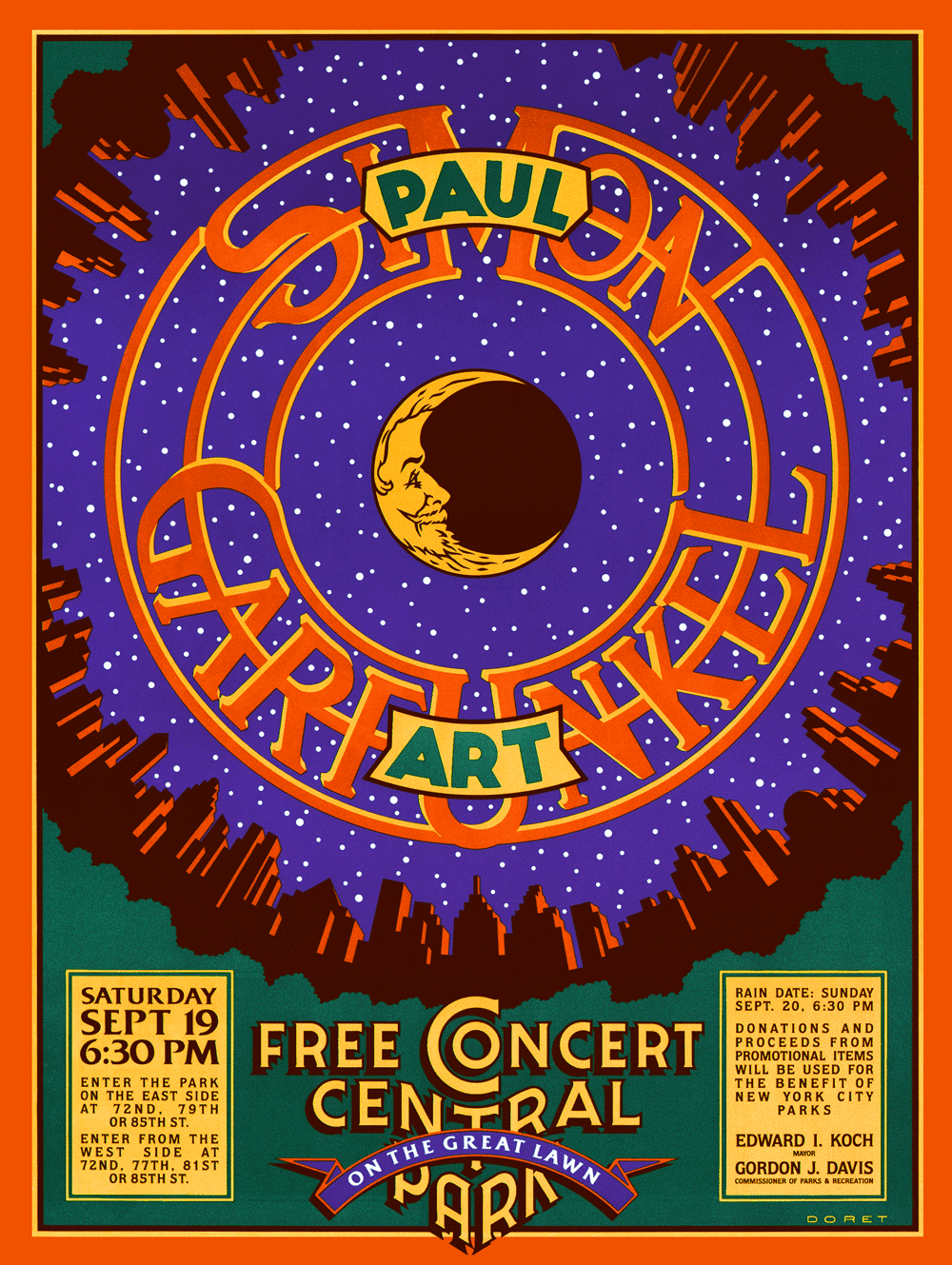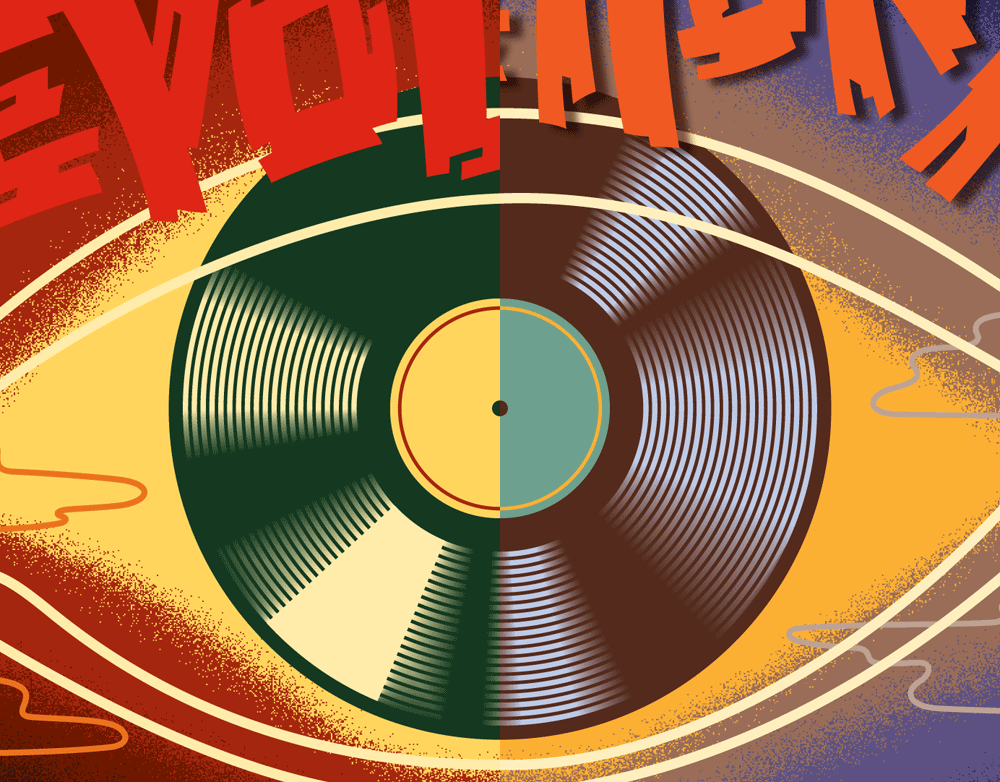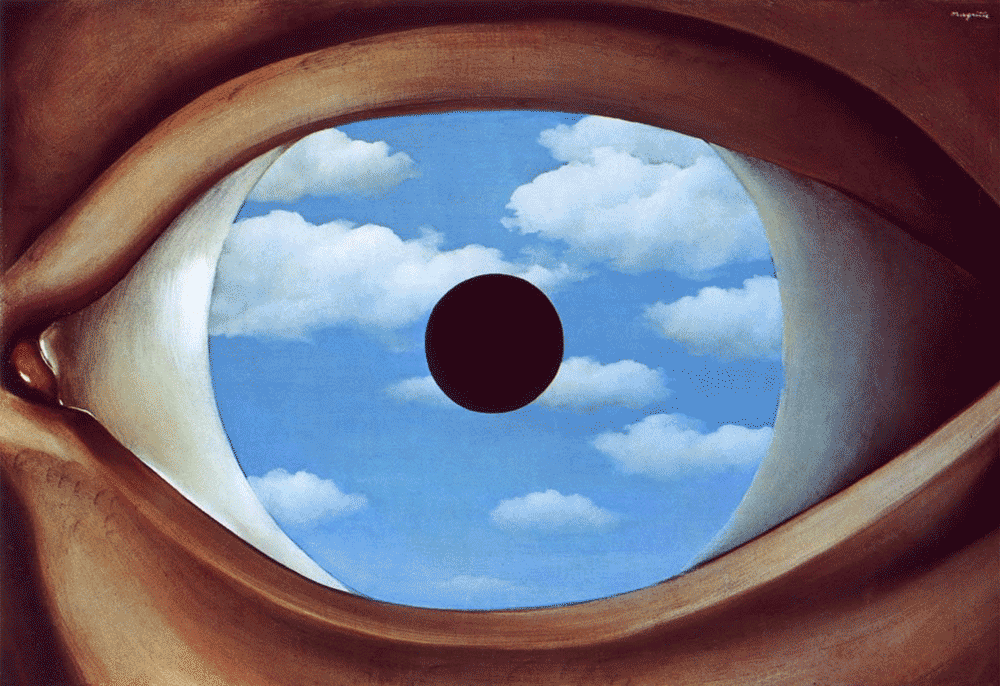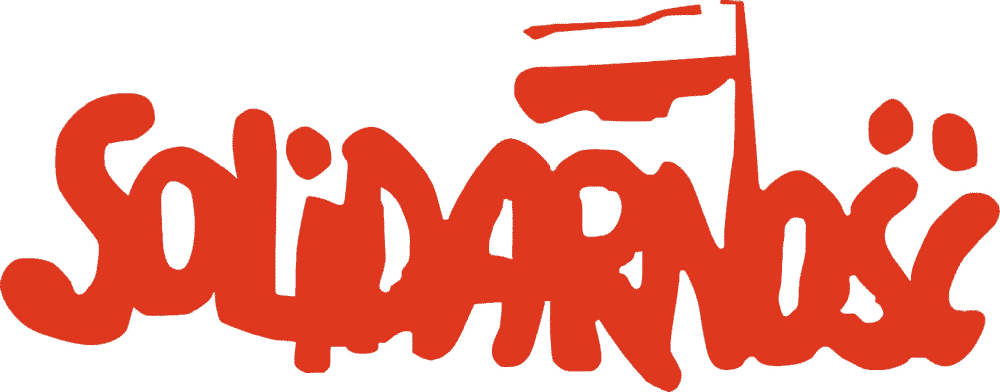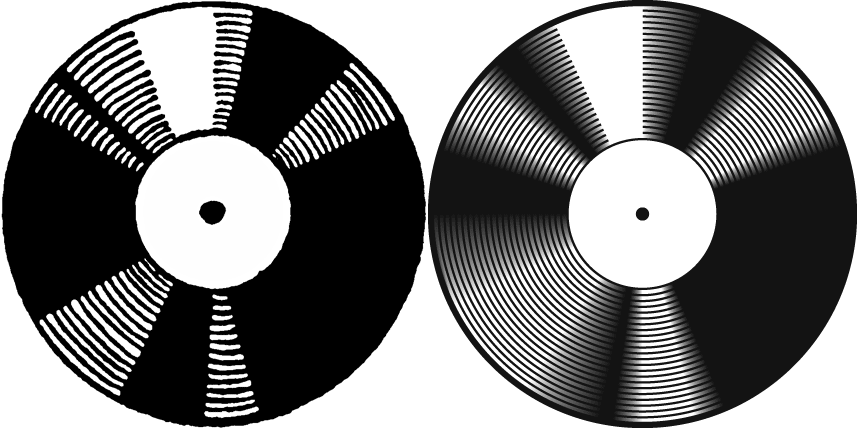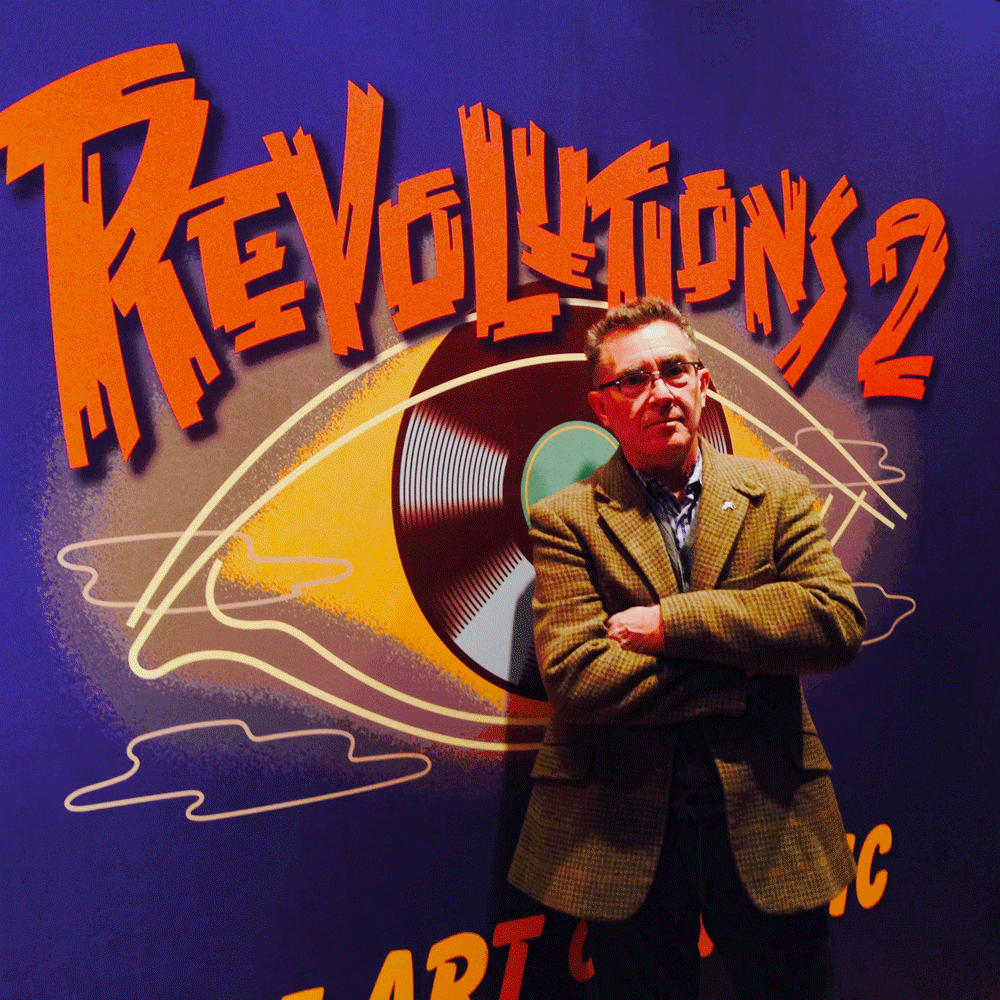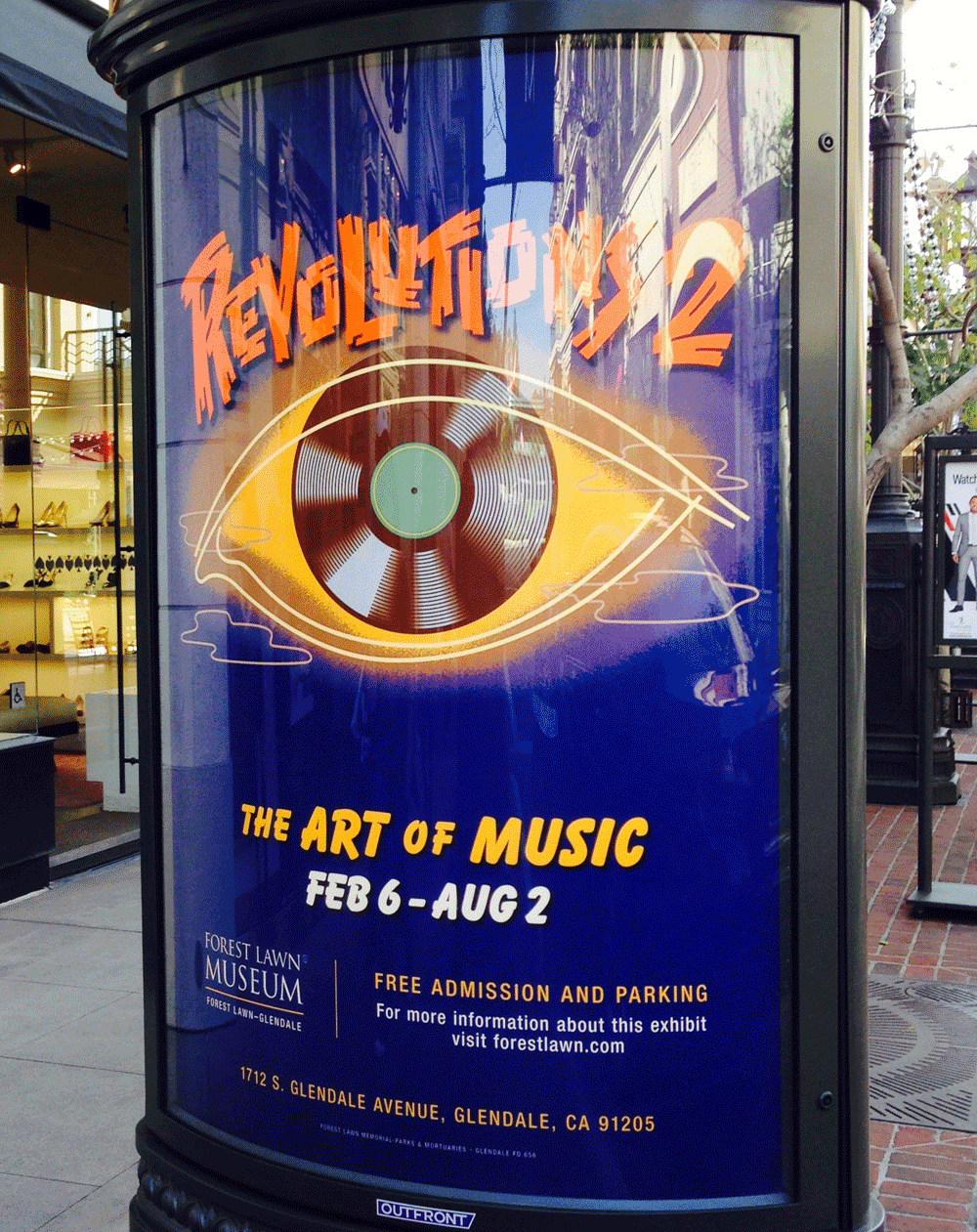 |
|
John Waters’ “Cry-Baby” from Film to Broadway: Title Treatment Development
August 29, 2016 on 8:49 pm | By Michael | In Gigs, News, Wayback Machine | 1 CommentA few years ago I was asked to design a title treatment for the upcoming musical adaptaion to the Broadway stage of the 1990 John Waters cult classic film “Cry-Baby” which had originally featured Johnny Depp, Iggy Pop, Polly Bergen, Traci Lords, Ricki Lake, and Troy Donohue.
Below is the title treatment that was created for the film by others—which was simply the font “Magneto” with some added chrome effects:
“Cry-Baby–The Musical” was scheduled to open on Broadway in the Spring of 2008. The deadline on this job was unusually tight. I began work on November 15th. I had to deliver finishes by November 26th—eleven days later.
The first stage of any project is usually information gathering. In addition to a synopsis of the play, the info I received from the agency consisted of the following:
• Time Period: Early 1950’s (1950-1954/55)
• Style: Like all of your work, we need to respect the time-period but have a contemporary flair…in other words we took a 50’s logo and updated it for the 21st Century.
• We have 3 categories/styles that our Art Directors are focusing on: Pulp Fiction Book Jackets, Mad Magazine style, Early 1950s movie posters. I have attached some examples that I found on the internet when doing research for the project.
Here are two of the examples I was sent.
These examples were fine as far as type treatments on posters go, but a solution for “Cry-Baby” would probably have to go a bit farther in order to be able to stand on it’s own. I started doing my own research into the various genres that would be appropriate for this title treatment. In addition to the “Pulp”, “Mad Magazine” and “’50s Movie Poster” genres I felt that “Hot Rods” would also fit in nicely. I did my own research, coming up with many images such as the ones below:
I don’t use reference to “copy” from, but more to help me understand a mood, or set a theme, or push me toward a certain style. I might pull out 10 or more of my reference books—or sometimes none at all. It really depends on the project, and if my “creative juices” need a little jump-start.
Next I pick up a pencil and sketch pad and just start noodling and doodling. I might do many pages of these before I’m satisfied that I’ve got the germs of a few good ideas.
I‘ll go through all the pages of sketches, noting those that show some promise. In the case of this project, I picked out seven that I thought had potential and expanded them into rough pencil sketches that would be tight enough to present to the agency.
I try to provide graphic ideas that appear as different from one another as I can make them. Yet all of them should in some way fit within the parameters that were set out by the agency at the beginning of the project. Here is a little bit of the thinking behind the sketches:
The crowns in sketches 1 and 2 were suggested by one of the songs (“King Cry-Baby”) that appeared in the movie.
The letterforms in sketches 1 and 5 are references to “brightworks”– classic chrome car logos and ornaments of the ‘50s.
The letterforms in sketches 3 and 4 were an allusion to pulp novel covers and film noir and horror movie titles of the period.
Sketch 6 is a direct reference to hot rod decals. Sketch 7 is also a reference to hot rod decals and also to Matchbook covers.
The agency asked me to bring three of the sketches to a level of finish where the producers would be able to easily visualize the treatments, and where the agency could insert them into their layouts. The agency felt that sketches 3, and 7 were fine as is. So I was to move ahead and take these three sketches to finishes in Adobe Illustrator. Typically the way I do this is to take a rough sketch and redraw it, making refinements and changes as required. Then I take the refined pencil and place it in a layer in Illustrator as a Template. Because of the impending deadline, there was no time to do redraws on most the designs, so I mostly had to make-do with the rough sketches as they were . . .
. . . except for #7 which needed a bit more detail and exactitude in the drawing before I could proceed to finish.
On sketch 2, the agency asked me to remove the racing flags/musical note motif. They also asked me to remove the crown motif, as the song “King Cry-Baby” would no longer be in the show. We discussed that it might be a good idea to change the triangular background to a V-8 “V” shape to reinforce the automotive connection.
Additionally, they asked me if I had the time before the deadline, if I could develop sketch 1—that would be great. As it turned out I was able to
squeeze in a finish on this one as well before the deadline. I also needed to edit out the crown on this design for the same reason as in sketch 2.
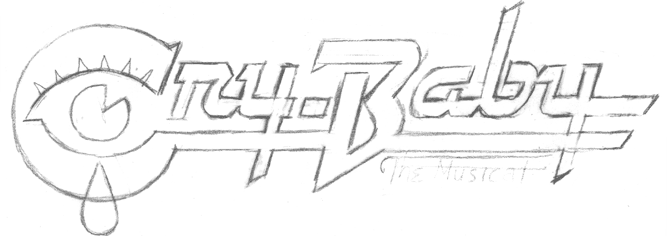
The one other thing I needed to add to these semi finished designs were the words “THE MUSICAL”. Of course I felt I should add those words in a way that would feel organic to the designs, and not “added-on”. I did a total of seven design solutions including the four you see above as finishes. The producers of the show selected design #3—the “pulp novel” style treatment. Unfortunately, and for reasons still unclear to me, this design (#3) was adapted and changed by others:
Sadly the show closed after only 45 previews and 68 performances.
#
A Stellar Poster for Simon & Garfunkel
March 23, 2015 on 8:13 pm | By Michael | In Gigs, News, Wayback Machine | 2 CommentsIF YOU’D LIKE TO PURCHASE A SIGNED COPY OF THIS POSTER, PLEASE
⬇︎ SCROLL TO THE BOTTOM OF THIS POST FOR INSTRUCTIONS ⬇︎
Back when I was doing fairly regular work for Time Magazine, one of their ADs—Irene Ramp—asked me if I wanted to do a poster for a reunion benefit concert for Paul Simon & Art Garfunkel that was to be held in Central Park. Irene was a friend of Paul Simon, and so putting Mr. Simon and myself together was fairly easy. Because of the many intervening years, I don’t anymore have my preliminary drawings or sketches for this piece, so here I would like to talk about my inspiration and how my ideas for the poster came to be.
Even as a young boy growing up in Brooklyn one of my passions was star-gazing. I remember saving up my meager allowance for months until I had enough saved ($42.15) to buy my own telescope. With my trusty “Jupiter” telescope (Made in Japan) I charted sunspots, gazed upon the craters and mountains of the moon, and saw the rings of Saturn. To help me find and recognize the constellations in the night sky I used a wheel chart I bought at the Planetarium called the “Star Explorer”. Apparently I was a young nerd in the making!
In addition to its usefulness I was fascinated by the graphics and the design—the representaion of the various star magnitudes by differently sized circles, and the seeming randomness of the star map in contrast with the beautiful geometry and design of the mechanism that made it all work. This strange beauty, born of utility, would stay with me for many years.
I had purchased the Star Explorer during one of my visits to the Hayden Planetarium. At my insistence, my parents took me there many times. The Planetarium was attached to Manhattan’s American Museum of Natural History (dinosaurs!), and I just couldn’t get enough of it. Whether it was seeing how much I weighed on Jupiter, or being able to touch an actual meteorite—or even just admiring the wonderful black light murals—I loved it all! But the best part (of course) was the sky show under the Planetarium dome.
Since 2000 the Hayden Planetarium has been housed inside the new Rose Center for Earth and Space, and has been completely revamped and brought up to date.
While the changes were needed, reflecting all the new technology and discoveries made since I was a kid, much has been lost, and I greatly miss all those things that had initially attracted and charmed me.
One of those things was the incredible look of the Zeiss Mark II projector. To me it looked like an alien spaceship or some sort of insect/monster. The new projector is a bit more high-tech and to my mind a little more visually nondescript. The other is that the projection dome is lacking one feature which I thought was great—and that is the wonderful silhouetted NYC skyline that surrounced you as the lights went down, simulating dusk.
I’m not the only one who thought the interior and projector were beautiful—it was the subject of a Fortune Magazine cover by John Cook.
Note the prominent role played by that skyline silhouette in his art. When you settled into your seat for the sky show, having that skyline surround you really made you feel connected to both the sky and to the city—it was as if you were laying down in the middle of Central Park (which is right across the street) at night, and were gazing up at the stars surrounded by the city. For me that was really magical. Actually adding the local environment to star charts and such was nothing new as is clearly shown in vintage charts such as this:
All these things were in the back of my mind when I met with Paul Simon to discuss the direction the poster would take. Just the fact that the concert would take place in Central Park on a warm Fall evening led me to start thinking about what it might be like to be at the concert, listening to music under the stars. That led me to thinking about how much I loved the Planetarium (just minutes away from the concert site) and how it felt to be there, about my telescope, about star charts, but most of all about that magical NYC skyline. I knew that I had to incorporate them all into my poster. Luckily all parties agreed! The concert was a great success, attended by half a million, but the best thing was that despite the fact that it had rained all that day, the clouds parted and the stars came out.
The posters had been sniped up all over NYC before the concert. If you were lucky, you were able to snatch one off a wall without destroying it. Despite the fact that T-shirts were produced and were for sale at the concert, there actually were never any officially sanctioned posters for sale anywhere. Over the years I’ve had many, many people write to me wondering where they could find a poster. I never had that many myself, having given away to friends and acquaintences what few I had. But luckily I kept one. Now I am very happy to be able to say that I am producing a limited edition of the poster myself, which I am making available through my Illogator site.
These posters will be 18” x 24”—the original size the poster was produced at, and will be signed by yours truly. I scanned the original poster myself, and spent days retouching the scan until it was absolutely perfect. These digital prints (or giclées) actually look better than the original. The original printing was done on fairly inexpensive paper, but the edition I produced is on a much better stock—which allows much more depth of color. If you’d like to find out more about the edition, just email me HERE, and I can fill you in.
“And in the naked light I saw ten thousand people maybe more”
10 Years Apart—The Posters for “Revolutions: The Art of Music”
February 23, 2015 on 10:16 am | By Michael | In Gigs, News | 2 CommentsIn 2005 I was asked to create a promotional poster for an exhibition of music-related graphics that was to be held at the Forest Lawn Museum in Burbank, California. The show was to be called “Revolutions”, a name that was a stroke of genius from the fertile mind of my friend Brad Benedict—creator of Capitol Records’ “Ultra-Lounge” series.
“An art show held above a cemetery?” one might ask. Attending events at cemeteries is nothing new for Angelenos who for years have been picnicking and enjoying movies outdoors on warm evenings at the Hollywood Forever Cemetery. Actually the Forest Lawn Museum is a wonderful venue, set atop a hill in Burbank with incredible panoramic views of the entire city of Los Angeles—not unlike the sweeping vistas one experiences from atop the Getty Museum on the other side of the city.
The challenge was to create an iconic image that could represent all the incredible diverse types of art that have been—and continue to be—created to accompany the prodigious output of the recording industry. I felt that a representation of the human eye (even though to some it might seem a bit clichéd) should play a prominent role in the design. So, with that in mind, I started thinking about the work of two of my favorite artists: A.M. Cassandre and Renée Magritte, and the work that they had done with the motif of the human eye. One of Magritte’s most famous and intriguing paintings is called “The False Mirror”:
When I took a look at this famous piece, I realized how powerful one simple image like this could be. Next I took a look at some of Cassandre’s work and realized that he had returned time and again to this highly symbolic motif. Here are two magazine covers he created for Harper’s Bazaar:
It then occurred to me that the pupil of the eyes could be made to represent a vinyl record label and the iris represent the LP itself. What better way to represent the visual art of the recording industry?
I wanted to “frame” the poster to help amplify the idea that this was an art exhibition, and I remembered a series of album covers that Capitol Records released between the late 1940s and the early 1950s that all used a very graphic “frame” on the cover over which they would attach a smaller label containing the graphics for that particular recording. I believe it was a kind of an early “branding” that Capitol Records was attempting so that people could immediately identify the recordings as belonging to Capitol. The covers with the frames appeared on Capitol’s 10” extended play recordings which usually contained three to four songs per side, as opposed to the one song per side that was commonplace up until then. These 10” recordings were the predecessors to 12” long playing records. Here are a few examples:
To accomplish this “framing” I decided to photograph a wooden door in my studio, cut the photo up into strips, and then alter the color and make it more graphic through the magic of Photoshop. Here’s the portion of the frame that runs along the bottom of the poster:
The idea for how to treat the headline, the title of the show flowed directly out of the word itself: “Revolutions” I would treat it in a very graphic way, but I would reference the brush lettering of hand-painted placards that are often seen at “revolutionary” demonstrations and protests. Although I would not follow it stylistically, the banner for the Polish “Solidarity” movement that helped bring about the fall of Communism came to mind:
So with all the elements of my design firmly in hand, I began assembling them into a pencil drawing and presented it to the Museum:
My design was quickly approved, and so I set about the work of putting it all together. The most difficult part in creating the finished art was how to render the “pupil” and the “iris” of the eye. Working in Adobe Illustrator made it fairly easy, creating it in sections and using the gradient tool. Below I’ll contrast the sketch I did with the finished art—it’s a very tried and true method for rendering a shiny vinyl recording:
As I mentioned, like most of my art, I created the final in layers in Adobe Illustrator. Creating the art in layers allows a lot of flexibility when designing a complex piece like this one. Here is a representation that demonstrates how the different layers all fit together:
Earlier in 2014 the Forest Lawn Museum contacted me again to let me know that they were going to hold another exhibition “Revolutions 2” on the 10th anniversary of “Revolutions” in 2015, and asked if I would prepare another poster for the upcoming show. I told them that my idea for that would be to suggest a continuity between the two shows by literally repeating the first poster. I explained that giving the second poster a new color palette would provide enough differentiation between the two shows. The folks at Forest Lawn agreed, and I began work on “Revolutions 2”.
To help make the new palette more coherent I created a gradient between two of the dominant colors I selected, then was able to pick out intermediate colors for the background:
The new poster would have abbreviated copy, so I needed to slightly reorganize some of the elements and add a “2” to the title. I also needed to change the subtitle to “The Art of Music” from the more cumbersome “Artists Who Rocked the World of Music Industry Graphics” (quite a mouthful!). Finally a shadow was added behind the title to help give the piece a little more depth, and (for reasons I cannot recall!) I reversed the direction of the shadows on the frame sections.
Below are the two posters—separated by a decade and side-by-side. To be honest, in my opinion the later poster is more successful. I think the colors work better and are more pleasing.
As you’ve no doubt noticed, as of the date of this writing the show is up at Forest Lawn. But the big star-studded event opening will be held at the Museum on Saturday February 28th from 6:00 to 8:00 PM. It’s quite a bit larger than the 2005 show with over 175 paintings, photos, sculpture and prints from over 30 artists (including five pieces by yours truly). If you are a lover of album covers or posters, this is an event not to be missed!
Opening Night at Forest Lawn Museum.
Powered by WordPress and Nifty Cube with Recetas theme design by Pablo Carnaghi.
Entries and comments feeds.
Valid XHTML and CSS.
